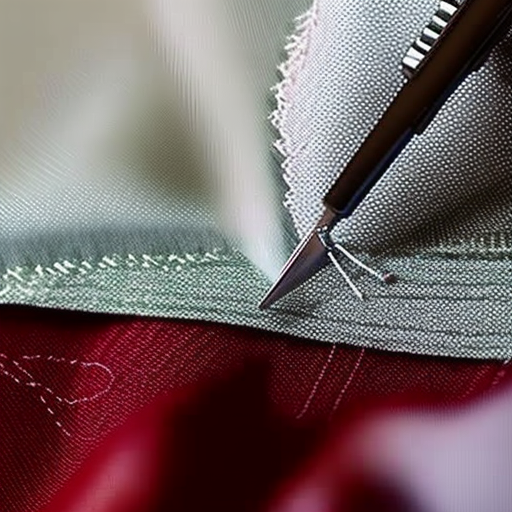The Art and Skill of Sewing
Whether you’re a seasoned hobbyist or a beginner with a needle, mastering good sewing techniques is essential for creating beautiful and durable garments, home decor items, and more. By following these best practices, you can elevate your sewing skills to the next level and achieve professional-looking results.
1. Thread and Needle Selection
Choosing the right combination of thread and needle is crucial for successful sewing. It’s important to match the thread weight to the fabric weight and ensure the needle size corresponds to the thread thickness. Using a fine needle with heavy thread or vice versa can lead to inconsistent tension and stitch breakage.
2. Proper Stitching Techniques
Mastering different sewing stitches is fundamental for a range of sewing projects. Whether you’re gathering fabric, constructing garments, or embellishing with decorative stitches, ensure you understand the purpose and technique behind each stitch. Practice regularly to improve your speed and accuracy.

3. Securing Seams
Preventing fraying and ensuring sturdy seams are essential for long-lasting garments. Backstitching at the beginning and end of a seam is a basic technique that reinforces the stitches. For extra durability, consider using French seams or serging the raw edges.
4. Pressing and Ironing
Don’t underestimate the power of pressing and ironing during the sewing process. Use a quality iron and press seams open or to one side for a professional finish. Investing time in this step greatly enhances the overall appearance of your creations.

5. Precision Cutting
Proper cutting techniques significantly impact the final outcome of your sewing project. Use sharp scissors or rotary cutters to ensure clean and accurate cuts. Take your time to follow the pattern markings and match fabric grainlines to prevent distortion or misalignment.
6. Attention to Details
In sewing, the devil is in the details. Pay close attention to small details such as thread tension, pattern alignment, and finishing touches. Check your work frequently to catch any potential issues and make adjustments when necessary.
7. Continuous Learning
Sewing is a skill that requires continuous learning and improvement. Stay updated with the latest sewing techniques and trends by attending workshops, joining online communities, and exploring various sewing resources. Embrace challenges and constantly seek ways to expand your sewing repertoire.

By following these good sewing techniques, you can elevate your sewing projects and gain confidence in your skills. Remember, practice makes perfect, so take the time to refine your techniques and enjoy the creative process.




